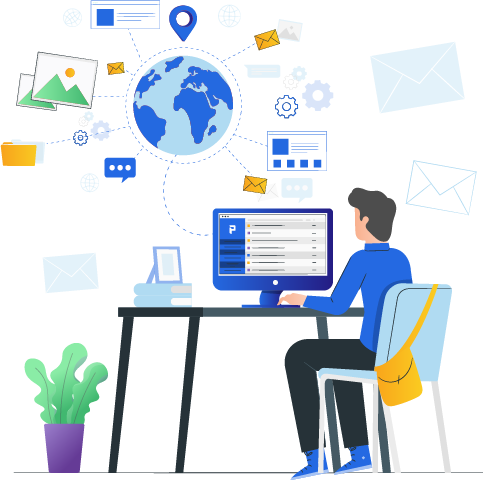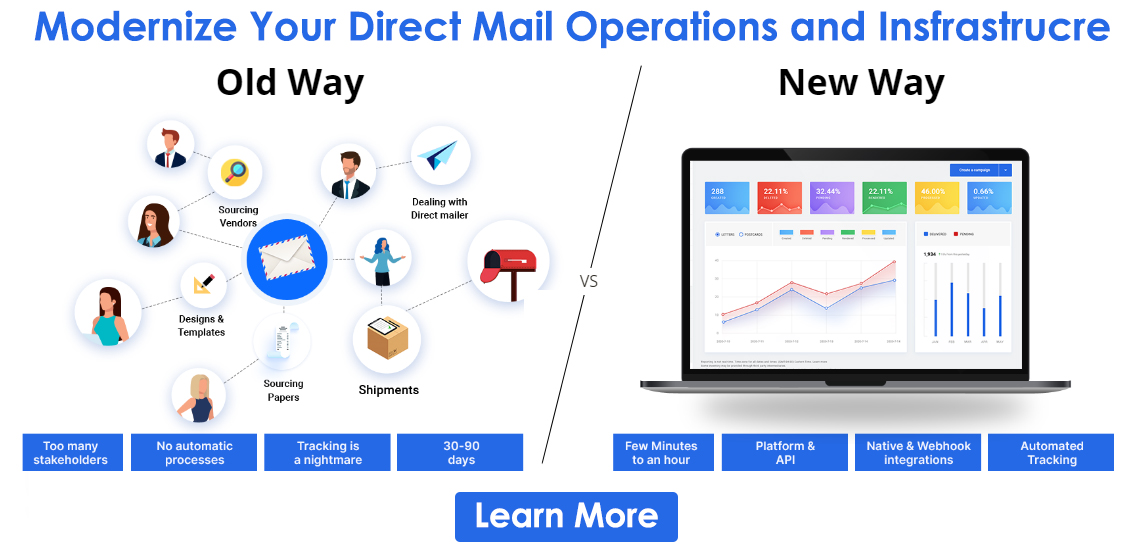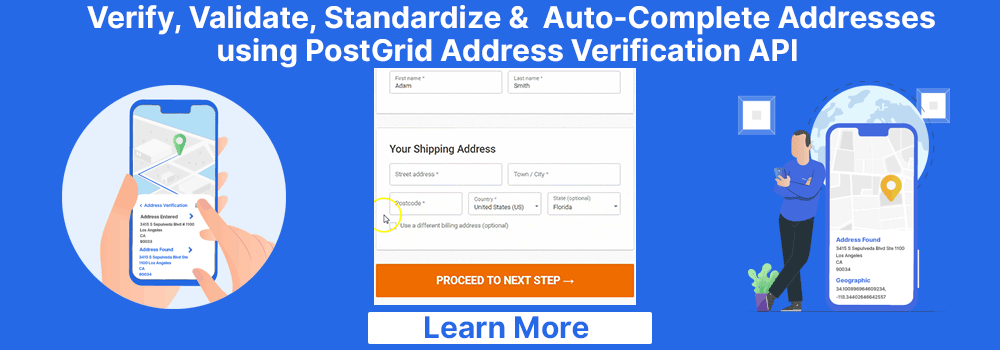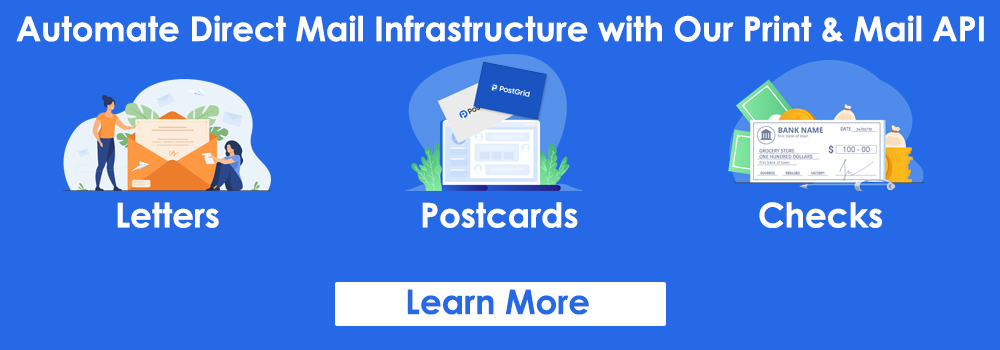
What Are The Best Ways To Unify Your Online And Offline Marketing Examples?
“A dynamic duo who work well together can be worth any three people working in isolation.” – Larry Constantine.
The above quote makes so much sense in almost every situation with a dynamic duo, including marketing. We are talking about the dynamic team of online and offline marketing examples.

Many people are still unsure about integrating online and offline marketing examples for their businesses. But it’s not because they are uncertain about the results but because they are unsure how to implement such an integration.
What if we told you that you could effectively unify your online and offline marketing examples with proper planning? Not only that, you could boost your marketing results exponentially by combining the best of the two worlds.
At this point, you are probably eager to understand how you can combine your online and offline marketing strategies efficiently. Well, we have good news for you because we discussed that below.
What Does It Mean To Integrate Online And Online Marketing Strategies?
Integrating offline and online marketing strategies involves simultaneously implementing marketing strategies on online and offline channels. But, the critical part is that these strategies mutually depend on each other. In other words, offline and online marketing efforts have a connection to each other.
When it comes to integrating online and offline marketing examples, there are two major types- you should consider.
- Offline-to-Online Marketing.
- Online-to-Offline Marketing.
You can use offline marketing efforts to drive customers to your digital offering (website, social media, etc.). Similarly, you can push customers to your brand’s physical presence (brick-and-mortar store, stall at expos etc.). Hence, integrating online and offline marketing strategies combines the best of two worlds.
Offline-to-Online Marketing
Offline-to-online marketing is often more common than its online-to-offline counterpart. It is where you use offline marketing methods like direct mail advertising to attract customers to your online channel. By online channels, we don’t necessarily mean your website alone. It could also be your social media accounts, online forms, etc.
For instance, consider offline marketing examples like direct mail marketing. Direct mail has a maximum response rate of 4.4% compared to the meagre 0.12% email response rate. It means you are more likely to get a response rate from direct mail than most forms of online marketing.
The difference between the two online and offline marketing examples is evident. It makes email campaigns look like a snail in front of a cheetah. And it’s ironic because, among the two marketing methods, direct mail is called snail mail.
That’s not all. You can significantly boost your marketing results by combining offline examples like direct mail with your online sales effort. Perhaps even exponentially. However, ensuring a seamless transition from your offline to online marketing channels may be challenging.

Online-to-Offline Marketing
As we saw above, you can use online marketing channels to attract customers to your offline marketing efforts, like in-store sales. The online to offline marketing examples can use social media to let customers know about an event you are organizing.
In many ways, the online-to-offline marketing examples as very similar to offline-to-online marketing. You must maintain consistency throughout the customer’s journey, whether they move from online to offline or offline to online marketing channels.
In other words, when integrating online and offline marketing examples for your business, you must maintain your brand’s identity, tone of voice, etc. Hence, if you send direct mail and email to your customers, the message should feel the same, even if they look different.

Offline Marketing Examples
To integrate your online and offline marketing strategies, you must ensure that the marketing channels are compatible. You can’t use an offline marketing channel that can not combine with an online marketing channel.
Here, we discuss some of the best offline marketing examples you can integrate with your online marketing efforts.
Direct Mail
Direct mail is one of the best offline marketing examples that seamlessly integrates with your online marketing efforts. You must print a QR code in your direct mail to bridge the gap between your online and offline marketing channels.
The QR code could lead the customer to a virtual event or social media hashtag campaign you promote. You can also use a QR code or PURL to take the customer to an online sales event. These are examples of integrating online and offline marketing strategies for your business. However, there are many more examples like these.
Furthermore, you can use advanced direct mail solutions like PostGrid to automate and digitize your direct mail marketing process. It allows you to use a specialized dashboard to personalize print media, such as postcards, invoices, brochures, etc. Such capabilities make offline marketing examples like direct mail convenient to integrate with online marketing efforts.
That’s not all. PostGrid can also integrate with your website’s existing CRM solutions, such as Hub Spot, Salesforce, etc. Hence, it can easily personalize your mail using data directly from your CRM. As a result, you can combine your online and offline marketing strategies more effectively and yield better results.
Face-To-Face Networking
Another popular choice among the offline marketing examples you can use for your business is face-to-face networking. Regardless of how big a leap we take technologically, you can’t beat face-to-face interaction’s benefits.
Furthermore, putting a face to the name makes your marketing efforts all the more personal. On the flip side, there are certain limitations to face-to-face networking. Unlike other offline marketing examples like direct mail, the reach of such a marketing effort is relatively limited.
After all, how many people can a single person meet in a day? You can find relevant networking opportunities by analyzing your target audience’s frequent visits. Targeting prospects at events and expos is ideal for combining your business’s online and offline marketing strategies.
You can use these opportunities to make the target audience sign up for a trial or fill up an online form. People often tend not to say no during face-to-face interactions. You can use this to your advantage and help your offline marketing examples to succeed.
Print Publications
Print publications are also one of the best offline marketing examples for your business organization. Getting your business featured in a relevant print publication ensures that you get quality leads. More importantly, it legitimizes your business.
People often tend to trust brands with an offline presence, even if it is just an ad in the local newspaper. Hence, besides boosting your brand visibility, it enhances your brand value. You can see why it is appealing to use offline marketing examples like print publications for your business.
However, make sure to spend some time seeking out the right publications for your business. There is no point in publishing a sports bike ad in a pet magazine or vice versa. In other words, ensure that the print publication integrating online and offline marketing examples has a relevant audience.
Like direct mail, you can use a QR code to integrate other online and offline marketing examples for your campaign. And to ensure the best results for your direct mail campaign use only reputable print publications for your campaigns.

10 Ways For Integrating Online And Offline Marketing Examples
The most crucial and challenging part of integrating online and offline marketing examples is ensuring consistency at different touch points. If your other marketing strategies do not align, the message becomes inconsistent and may confuse the customer.
As a result, instead of enticing the customer with your marketing message and encouraging conversion, you may end up pushing them away. You don’t want to do that. So, here are some ways you can unify or integrate online and offline marketing strategies for your business.
#1 Ensure A Single Focus For Online And Offline Marketing Strategies
It is incredibly challenging to track the ROI for most offline marketing efforts. The only exceptions are where you can use advanced automation tools like PostGrid. Hence, unifying your business organization’s online and offline marketing strategies is challenging.
However, there is an easy way out of this problem: to have a single focus for both marketing strategies. Besides that, you should also maintain a singular point of contact for both channels. The basic idea is to use online and offline marketing examples to sell the same product or service.
Not only that, the outlet of all the offline marketing examples should lead to the same online link or landing page. As we discussed above, you can use a QR code or a PURL to accomplish this. Doing so will help you better track your marketing efforts and ensure continuity for the campaign.
#2 Focus On The Search Intent
The next thing you need to do to combine your online and offline marketing strategies is to focus on the search intent. It means you must create helpful content for online and offline marketing efforts.
When it comes to content, you must ensure that you don’t try too hard to sell your product or service. Instead, focus on helpful content that can resonate with the target audience. And to accomplish this, you must narrow down the audience’s search intent. In other words, the online and offline marketing examples you use should have helpful content that can help the user.
#3 Cross-Promotion Strategy
Cross-promotion strategy is nothing more than using online and offline marketing examples simultaneously to achieve the same marketing objectives. However, it is not an easy task to accomplish. You may need to think outside the box to create more buzz around the campaign you are trying to build.
For instance, if you organize an offline event, ensure that you use the full capability of your online channels to market it. Use online and offline marketing examples to reach the maximum number of people. It means using the full power of your social media accounts, your website, and any other online channel.
You can even implement a timer countdown on your website to attract the maximum number of visitors. Additionally, you can employ offline marketing examples like flyer distribution within a specific area. You can further boost engagements by offering something of value, like a discount code, with your marketing efforts.
#4 Collect Online Contact Details Offline
Another simple way of integrating online and offline marketing examples is to collect their online contact details offline. For example, you can take note of the email addresses or social media handles of customers who come into your store. However, you do not have to limit yourself to this approach.
You can also use offline marketing campaigns, including direct mail, to create a buzz around your brand. For instance, you can use offline marketing examples like direct mail to start a hashtag trend for your brand. All you need to do is encourage your audience to go online and promote the hashtag in return for a discount on their next purchase.
Similarly, you can use any offline marketing examples to accomplish any marketing goal. It doesn’t necessarily have to be a hashtag campaign. You can use this approach regardless of your marketing goal or channel.
#5 Equip Yourself With Relevant And Dedicated Tracking
As we mentioned before, tracking offline marketing examples can often seem challenging. With advanced offline marketing tools like PostGrid, you can follow offline marketing channels like direct mail. Unfortunately, such a capability is not available for every offline marketing channel.
Take offline marketing examples such as billboards, magazines, TV commercials, etc. You can only track these marketing efforts to a certain extent, and a lot of approximation is involved. Hence, the best approach you can take here is to set up relevant and dedicated tracking for all your marketing channels.
So, you might have to consider purchasing phone numbers and forwarding them to your main number. Similarly, you can consider acquiring domains and delivering traffic to a single domain address. As all the traffic comes to the same landing page, tracking the overall success of the online and offline marketing strategies becomes significantly easier.
#6 Direct Offline Consumers To Your Online Channels
The best way to make offline marketing examples such as direct mail more trackable is to direct the audience to your website. It is an excellent way to ensure offline marketing aligns perfectly with your online marketing strategy.
As we mentioned, including a QR code makes it highly convenient for your customers to reach your online channel. And once they come to your website, you can use your existing analytic tools to understand user behaviour and track your marketing campaigns. As a result, your offline marketing examples become immediately trackable.
You can also use offline marketing examples to boost engagements to any of your online channels, including social media. For instance, you can offer a unique discount code to everyone who follows your social media accounts. Such tactics often tend to yield good results for your marketing campaigns.
#7 Connect Online And Offline Marketing Examples With Custom Tracking URLs
When integrating online and offline marketing examples, it is likely that the target only sees one of these efforts. Hence, allowing your target audience to seamlessly transit between the two mediums would be best.
You can accomplish this with a custom tracking URL. It is relatively easy for you to use these unique URLs for all your offline marketing examples. And when anyone visits these URLs, you instantly know they saw your offline marketing efforts. This approach is often more convenient for businesses.
Additionally, you can go a step further by using separate or different URLs for the different types of ads you employ. So, suppose you use multiple offline channels, including direct mail, print publications, etc. You can use a separate URL for each of the offline marketing examples you use.
By doing so, you can track the response for all offline marketing examples separately and analyze them. It provides you with a more comprehensive picture of your marketing efforts. Some might even say this is a neater or more categorized approach to tracking marketing efforts.
#8 Use Consistent Design Elements Across Online And Offline Channels
As you can see, there are several ways to integrate online and offline marketing examples for your business. One of the ways you should try is to maintain consistency in your design elements across online and offline platforms.
There is no denying the role of brand recognition in marketing. Generally, a consumer takes around 5 to 7 interactions with a brand to remember the brand. But this is good news if you use online and offline marketing strategies because it effectively increases your touch points/interactions.
Hence, anchoring your branding in the target’s subconscious becomes significantly easier. However, this only works if you maintain consistent branding across online and offline marketing examples you use. Hence, ensure that you use consistent design elements that align with your branding regardless of your marketing channel.
#9 Use Incentive Or Rewards To Entice Customers
This one is a no-brainer; if you haven’t already thought of this, it is high time you did. Customers don’t often react to advertisements as you would hope, and generating a positive response is no cakewalk. However, you can change this with the right incentives for your online and offline marketing strategies.
For instance, you can use offline marketing examples like direct mail services to attract customers to your online store. All you need to do is provide a unique discount code that the customer can redeem on your website.
Similarly, you can use online channels like email or social media marketing to bring customers to your physical store. The only difference is that you use a discount code redeemable only at the physical store instead of your online store. Hence, you should include an incentive in your online and offline marketing strategies whenever possible.
 Also Read: Healthcare Marketing Trends
Also Read: Healthcare Marketing Trends#10 Automated Solutions For Integrating Online And Offline Marketing Examples
Another great way to integrate online and offline marketing examples is to use automated solutions. The only downside is that automation is not so standard for offline marketing channels. However, the option is not nonexistent.
For instance, you can automate offline marketing examples like direct mail with an automation solution like PostGrid. It allows you to personalize, print, and mail marketing materials such as postcards, brochures, etc., with the click of a button. But that’s not even the best part.
It provides you with significantly better tracking and analytic features. Furthermore, you can manage the entire direct mail process through a centralized system. Hence, PostGrid is one of the best tools for integrating online and offline marketing examples for your business.
PostGrid has helped numerous clients in industries, including healthcare, insurance, real estate, etc., streamline their direct mail campaigns. A leading healthcare provider uses PostGrid to send 10,000 emails every month automatically.
 Also Read: Financial Advisor Marketing Plan
Also Read: Financial Advisor Marketing PlanConclusion
Combining your online and offline marketing examples is a great way to enhance the results of your marketing efforts. However, you must consider numerous aspects to ensure that your actions do not go unnoticed. Consistency and tracking are essential to ensure quality integration between your online and offline marketing channels.
Luckily, tools like PostGrid make it easier to combine online and offline marketing strategies for your business. PostGrid’s automated direct mail solution is the perfect intermediary between your online and offline marketing channels.
With an advanced tool like PostGrid, you can easily connect your online and offline marketing examples and enhance their results. PostGrid can integrate with your website, including your CRM solution, to produce personalized marketing materials.
On top of that, you also get advanced tracking and analytic features using PostGrid. Unfortunately, not all offline marketing examples have the same capabilities because of a lack of automation solutions. Nonetheless, you can still use the different strategies discussed above to bridge the gap between online and offline marketing channels.










